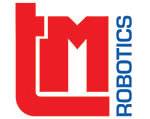Kickstarter - Start Your Rotors - C-mi is a Drone for Everyone
Composites and Robotmaster
Simulating Clearpath Robots In Maplesim
Mohamed Bin Zayed International Robotics Challenge Releases Competition Details
ABB's Acquisition of Gomtec Expands Collaborative Robotics Portfolio
Market Report - Agricultural Robots Market Size, Company Share To 2020: PTA Newsroom.
Innodisk Announces Ultra-Reliable DRAM-less SSDs with High IOPS for Embedded Applications
Hoffmann-Krippner To Roll Out New Sensor Technologies at Sensors Expo
Virtual Reality Enthusiasts to Welcome Perception Neuron Motion Capture Technology at SVVR 2015
Tynker Connects Young Programmers to Millions of Devices on the Internet of Things
Leading Industry Experts to Present Dynamic Educational Sessions and Case Studies at 2015 Drone World Expo
Five High School Students Win Robots4Us Video Contest-and a Trip to the DARPA Robotics Challenge Finals
25 teams prepare for 2015 DARPA Robotics Challenge Finals
Nuclear Response Robot Market Trends, Company Growth To 2019: PTA Newsroom.
Robotic Surgery Market - Global Industry Analysis and Forecast to 2020, by Persistence Market Research
Records 7546 to 7560 of 12446
First | Previous | Next | Last
Industrial Robotics - Featured Product

High Performance Servo Drives for localized and distributed control applications from Servo2Go.com
Robotics and Automation - Featured Company

